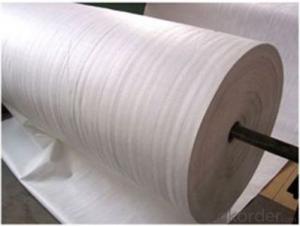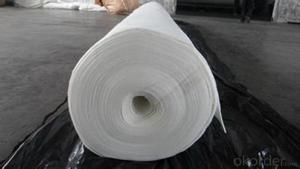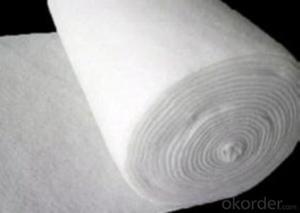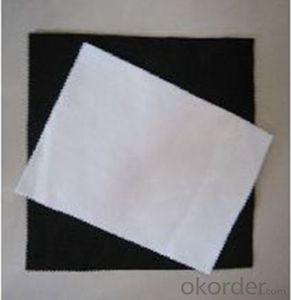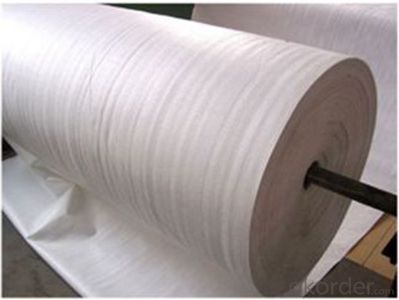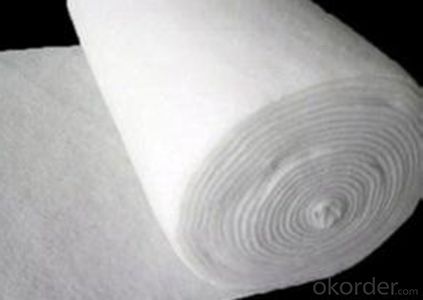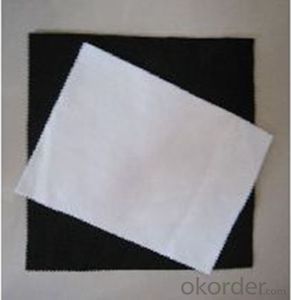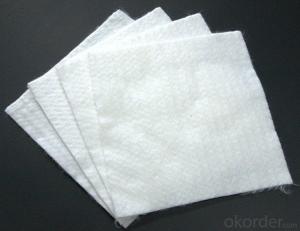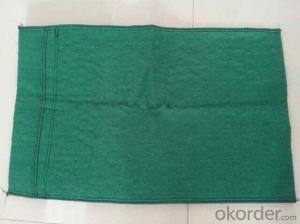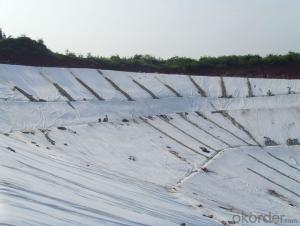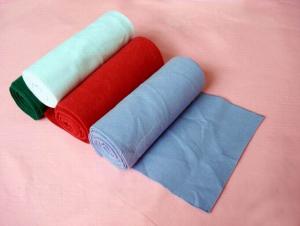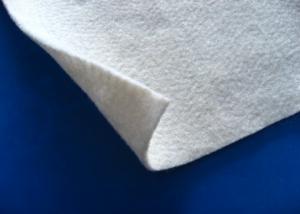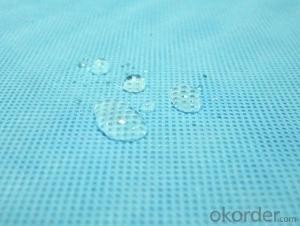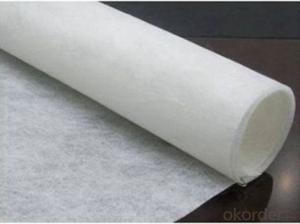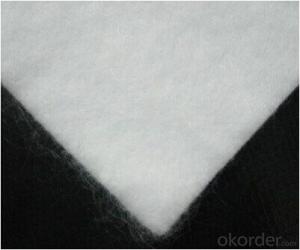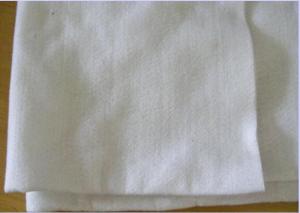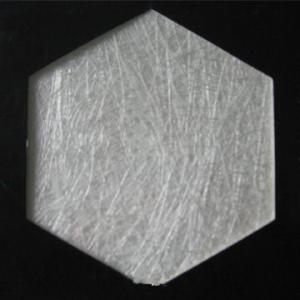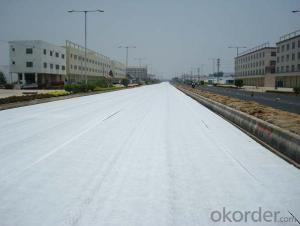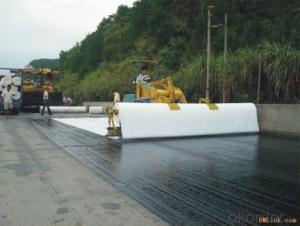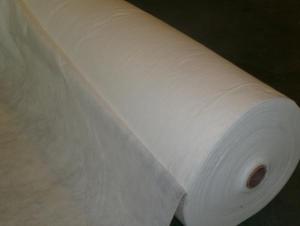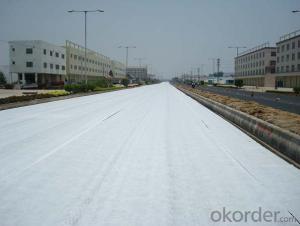Geotextile Plant PP Non-Woven Geotextile with Good Quality
- Loading Port:
- China main port
- Payment Terms:
- TT OR LC
- Min Order Qty:
- 5000 g/m²
- Supply Capability:
- 1000000 g/m²/month
OKorder Service Pledge
OKorder Financial Service
You Might Also Like
Specification
Quick Details
· Type: Geotextiles
· Place of Origin: Shandong, China (Mainland)
· Brand Name: Dageng
· Model Number: PP400g
· Geotextile Type: Non-Woven Geotextiles
· Color: White
· Thickness: 3mm
· Breaking Strength,kN/m ≥: 12.5
· Elongation at Break,%: 25-100
· CBR Mullen Burst Strength,kN ≥: 2.1
· Sieve Size O90(O95),mm: 0.07-0.2
· Tear Strength,kN ≥: 0.33
· Delivery Detail: About 15 days after signing the contract
· Minimum Order Quantity: 10000 Square Meter/Square Meters
· Supply Ability:50000 Square Meter/Square Meters per Day
· Payment Terms: L/C,T/T
· Packing : standard package or according to customer's needs
Specifications
Mterial :PP
Width: max :6m
Thickness:0.9mm-5.0mm
Weight:100g/sq.m-1000g/sq.m
.UV (Ultra Violet) Stabilized
High Chemical Resistance
Optimum Elongation
Staple fibers needle punched non woven geotextile
The geotextile is made of polypropylene staple fibers on cross-laying equipment and needle punched equipment.
Feature: It owns the advantages of acid and alkali resistance, erosion resistance, aging resistance, large strength, stable size, good filtrability etc.
Functions: It mainly applied in water conservancy, road and railway for strengthening, separation, reversed filter and drainage of projects
2)Filament non woven geotextile
Filament geotextile has features as follows: High strength, good capacity of elongation and high biology tolerance, alkali tolerance, acidity tolerance, weather resistance good filtration and fine drainage capacity etc. Alo it is of low cost, easy in construction and use effects.
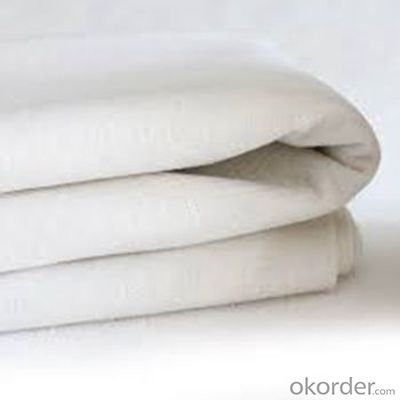
Quality assurance
1.On a regular basis or as per your request,we entrust national testing agencies to conduct quality inspections
2. Strictly in accordance with the ISO9001-2008 international quality system standard,we monitor and manage the whole process throughout production,quality testing,and measurement to ensure product quality
3. For quality-related construction delay or substandard construction(except for damage or losses due to customer’s responsibility or irresistible natural disasters),we have refunding,replacement,and repair services.We will respond to customers’ feedbacks on quality issues within 24 hours.
After-sales service
1.In order to provide customers with comprehensive technical support,we will provide technical and other related information upon request in a timely manner.
2.In required,we will appoint specialized technicians to the construction site to give technical trainings to construction people,and offer technical guidance throughout the whole construction process.
3.For damage due to shipment and delivery,after we receive the complaint,we will check the issure through provided pictures and videos.If our responsibility is confirmed,we wil offer free replacement.
4.When the construction is completed,as your request,our technical staff may participate in the final acceptance.
FAQ:
Q: What kind of payments does jenor support?
A: T/T, L/C, Cash are accepted.
Q: Do you charge for the samples?
A: Accordeing to our company policy, the samples are free, we only charge the freight fee. And we will return the freight fee during the next order.
Q: Can you produce according to customers' design?
A: Sure, we are professional manufacturer, OEM and ODM are both welcome.
Q: Do you have other products?
A: Yes, please check the pictures:
- Q: How do geotextiles improve the performance of geosynthetic tubes?
- Geotextiles improve the performance of geosynthetic tubes by enhancing their filtration and separation capabilities. They act as a barrier against soil particles, preventing clogging and promoting effective water drainage. Additionally, geotextiles provide reinforcement and stabilization to the geosynthetic tubes, increasing their strength and durability. This combination of filtration, separation, and reinforcement properties offered by geotextiles significantly enhances the overall performance of geosynthetic tubes in various geotechnical applications.
- Q: How do geotextiles contribute to land reclamation in coastal areas?
- Geotextiles contribute to land reclamation in coastal areas by acting as a barrier between the existing soil and the new land area. They help prevent erosion by stabilizing the soil, allowing vegetation to grow, and providing a foundation for the new land. Additionally, geotextiles can filter sediment and contaminants, improving water quality and protecting the surrounding ecosystem.
- Q: How do geotextiles contribute to sustainable drainage systems?
- Geotextiles contribute to sustainable drainage systems by providing effective filtration and separation of soil layers, preventing clogging and improving water infiltration. They also help in reducing erosion and promoting vegetation growth, thus enhancing the overall sustainability and longevity of drainage systems.
- Q: How do geotextiles help with reinforcement of geosynthetic tubes?
- Geotextiles help with reinforcement of geosynthetic tubes by providing additional strength and stability. They act as a barrier between the soil and the tube, preventing soil erosion and maintaining the shape and integrity of the tube. The geotextile fabric also helps distribute the load evenly across the tube, preventing localized stress and potential failure. Additionally, geotextiles can improve filtration and drainage, allowing water to pass through while retaining the soil particles, thus enhancing the overall performance and longevity of the geosynthetic tube.
- Q: Construction of composite geotextile
- Geotextile as a protective layer of geomembrane, so that the protection of impermeable layer from damage. In order to reduce the UV radiation, increase the anti-aging properties, it is best to use the laying method. Construction, the first use of smaller diameter sand or clay to find the base surface, and then laying geomembrane. Geomembrane should not be stretched too tight, buried at both ends of the soil part of the corrugated, and finally in the shop on the geomembrane with a fine sand or clay shop layer of 10cm or so excessive layer. Puzzle 20-30cm stone (or concrete prefabricated block) for the anti-Chong protective layer. Construction, should try to avoid the stones directly hit the geomembrane, the best side of the film side of the protective layer of the construction. Composite geomembrane and the surrounding structure should be connected with expansion bolts and steel plate pressure bar anchorage, the connection site to brush the emulsion asphalt (2mm thick) bonding, to prevent the occurrence of leakage.
- Q: How do geotextiles improve the performance of pavements?
- Geotextiles improve the performance of pavements by providing reinforcement and stabilization to the underlying soil. They act as a barrier, preventing the mixing of different layers and reducing the potential for rutting and cracking. Additionally, geotextiles enhance drainage and filtration, allowing for better water flow and reducing the risk of moisture-related damage. Overall, their inclusion in pavement construction increases durability, extends the lifespan, and reduces maintenance costs.
- Q: How do geotextiles aid in the protection of geomembranes?
- Geotextiles aid in the protection of geomembranes by acting as a barrier between the geomembrane and the surrounding soil or aggregate. They provide cushioning and support, preventing direct contact and potential damage to the geomembrane from sharp objects or uneven surfaces. Additionally, geotextiles can assist in preventing soil erosion and the migration of fine particles, enhancing the overall stability and longevity of the geomembrane installation.
- Q: Can geotextiles be used for erosion control in coastal dunes?
- Yes, geotextiles can be used for erosion control in coastal dunes. Geotextiles are permeable fabrics that can be installed to stabilize the sand and prevent erosion by trapping sediment and promoting vegetation growth. They provide an effective and sustainable solution for protecting coastal dunes from erosion caused by wind, waves, and human activities.
- Q: Ask geotextile factory in the use of geotextile aperture detector detection method which?
- Hello, geotextile detection method in GB / T and GB / T geotextile aperture in the introduction, you can look at these two standards. The first is geotextile pore size detection wet sieve method, the second is geotextile aperture detection dry sieve method. As the name suggests the first of these two methods is the participation of water, the other is basically the same, are placed in a single layer of geotextile standard small particles, through the vibration to detect the size of the leakage of particles to determine the geotextile pore size size. The difference is that the first standard in the need for continuous water on the particles, so the calculation method are also different. Specific detailed distinctions You can search these two criteria separately.
- Q: What are the applications of geotextiles?
- Geotextiles have a wide range of applications in civil engineering and environmental projects. They are commonly used in road construction, where they provide stability, erosion control, and reinforcement. Geotextiles are also utilized in landfills to separate and protect soil layers, preventing contamination. Additionally, they are employed in coastal engineering to mitigate erosion and stabilize shorelines. Geotextiles are also used in drainage systems, agriculture, and landscaping to control erosion, filter water, and promote vegetation growth.
Send your message to us
Geotextile Plant PP Non-Woven Geotextile with Good Quality
- Loading Port:
- China main port
- Payment Terms:
- TT OR LC
- Min Order Qty:
- 5000 g/m²
- Supply Capability:
- 1000000 g/m²/month
OKorder Service Pledge
OKorder Financial Service
Similar products
Hot products
Hot Searches
Related keywords
